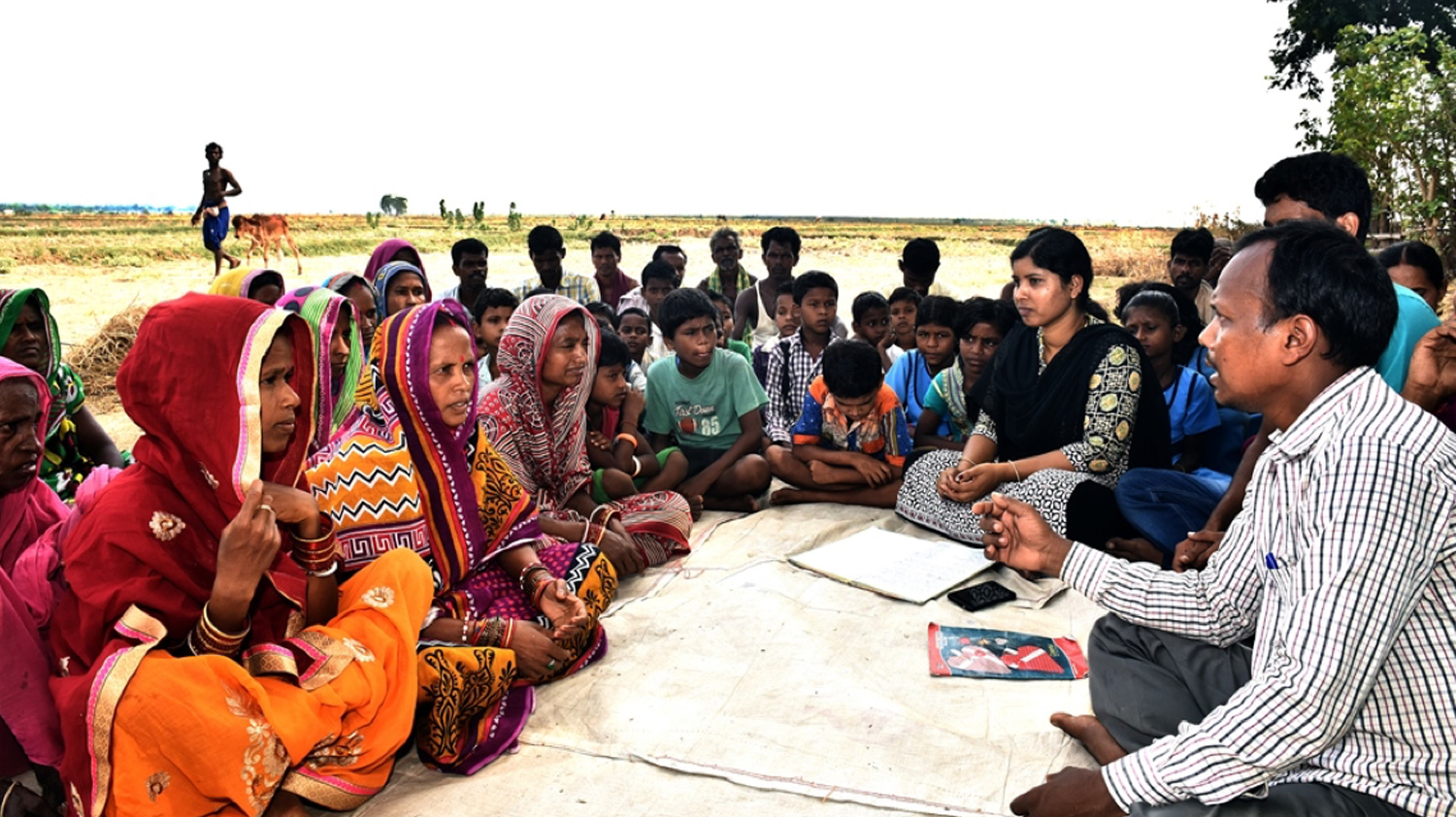We support the development of School Development Plans (SDPs) by providing training and tools to School Management Committee (SMC) members. The SMC addresses the grievances of parents and community members and categorises solutions into three groups: those that can be solved independently, those that need support from the local government, and those that require higher-level approval. Next, public resources available are identified and a plan is developed. The SDP is signed by all SMC members and submitted for approval to the gram panchayat and block education office. We track the status of the SDP at both the panchayat and block level.
We train anganwadi workers, mothers committee, and monitoring committee members on their roles and responsibilities for effective operation of the anganwadi centres. We collaborate with them to develop the Anganwadi Development Plan (ADP). We facilitate meetings to create the ADP and assist in analysing and listing improvements for better functioning of the centre.
Gram Panchayat Development Plan (GPDP) is a development plan for rural areas in India, prepared by the local government at the gram panchayat level. The GPDP is an annual plan that outlines the priority development activities to be undertaken in a specific financial year. The plan is based on the local needs and resources, and involves the participation of the community, specifically the gram sabha. The GPDP covers a wide range of areas, including infrastructure development, social services, education, health, livelihood, and others. We provide training and workshops to the gram panchayat staff on their roles and responsibilities in preparation of GPDP.
In 2020, the research department at Aspire in partnership with academics at University of St Andrews, Scotland conducted an impact evaluation of an intervention aimed at building the capacity of panchayat workers in preparing a GPDP. While we do not find an effect of the intervention on total planned expenditure proposed in the subsequent GPDPs, we do see a difference in spending priorities, with treated gram panchayats increasing their spending on social sector activities by around 20%.
